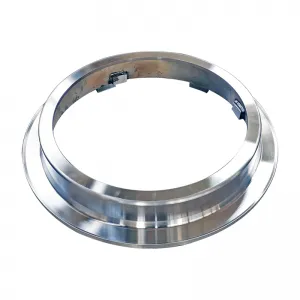नवम्बर . 17, 2024 04:59 Back to list
Understanding the Process and Benefits of Cast Iron Molding Techniques and Applications
The Art and Science of Cast Iron Molding
Cast iron molding is a fascinating process that combines ancient craftsmanship with modern engineering techniques
. This versatile material, known for its durability and excellent castability, has been used for centuries in various applications, from cookware to industrial machinery. Understanding the principles of cast iron molding is essential for anyone involved in metalworking or manufacturing.The process begins with the selection of the right type of cast iron, which typically consists of iron, carbon, and silicon. The most common types of cast iron include gray iron, ductile iron, and white iron, each possessing unique properties that make them suitable for different applications. Gray iron, for instance, is prized for its excellent machinability and wear resistance, while ductile iron offers superior strength and ductility.
Once the appropriate alloy is chosen, the molding process commences. This involves creating a mold, often made from sand or metal, into which the molten iron will be poured. Sand molds can be created using a variety of techniques, including green sand molding, where a mixture of sand, clay, and water is compacted to form the mold, and shell molding, which uses a resin-coated sand to create a more precise mold. The choice of molding technique significantly impacts the surface finish and dimensional accuracy of the final product.
cast iron molding

After the mold is prepared, the iron is melted in a furnace at high temperatures, typically ranging between 1200°C to 1500°C (2200°F to 2700°F). Once molten, the iron is cast into the mold cavities. The cooling process is crucial and requires careful control to ensure the desired properties are achieved. Cast iron can take several hours to cool, during which it undergoes solidification and phase changes that influence its microstructure.
Post-casting operations often follow molding and include cleaning, machining, and finishing. These steps are vital for achieving the final characteristics of the cast iron components. Depending on the intended application, additional treatments such as heat treatment may also be employed to enhance properties like hardness and tensile strength.
Cast iron molding has applications in numerous fields, including automotive, construction, and art. From engine blocks to decorative garden sculptures, the possibilities are endless. The resurgence of interest in traditional crafts also means that more artisans are exploring the beauty and functionality of cast iron.
In conclusion, cast iron molding is a blend of art, science, and engineering that offers a wealth of possibilities for creating durable and functional products. Whether used in industrial applications or handcrafted art, the process remains a testament to human ingenuity and craftsmanship. As technology advances, the future of cast iron molding promises even more innovations, ensuring its place in modern manufacturing.
-
Premium Cast Iron Water Main Pipe for Robust Infrastructure
NewsAug.27,2025
-
A-Rated Cast Aluminum Boilers: High-Efficiency Condensing Gas & LPG
NewsAug.26,2025
-
OEM Cast Silicon Aluminum Alloy Heat Exchanger | Custom & High Performance
NewsAug.25,2025
-
Centrifugally Cast Iron Water Main Pipe | Ductile Iron Solutions
NewsAug.24,2025
-
Durable Cast Steel Concrete Pipe Mold Bottom Rings & Base Trays
NewsAug.23,2025
-
Centrifugally Cast Iron Water Main Pipe for Reliable Mains
NewsAug.22,2025


